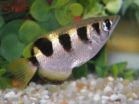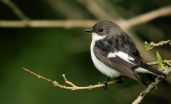(Press-News.org) European countries with gaps in border security surrounding agricultural imports have been invaded by the largest number of exotic insect pests, according to research published Oct 24 in the open access journal PLOS ONE by Steven Bacon and colleagues from the Swiss Federal Research Station Agroscope ART and the University of Fribourg, Switzerland.
Invasive agricultural pests pose growing environmental and economic problems, threatening biodiversity and costing billions of dollars in economic losses annually. Large volumes of cross-border trade increase the risks of invasion, but the lack of metrics to estimate this risk makes control a challenge.
In the new study, the authors combine global data sets of international agricultural trade with the biology and distribution of invasive insect species to create metrics that can be used to evaluate and improve border controls.
According to the study, known insect pests on many agricultural imports may be frequently undetected by European plant protection authorities. The authors suggest that this leaves European imports vulnerable to pests from countries like the USA, Argentina and Brazil, particularly to insects on large scale commodities such as soybeans, coffee and fruits like bananas, grapes and pineapples, which are the least controlled imports.
According to the authors, these metrics could help quantify the link between invasive insects and international trade. "Developing these metrics enables us to evaluate existing border controls in Europe for the first time. Highlighting gaps in border controls, which relate to insect invasions, gives plant protection authorities the tools to improve biosecurity", says Bacon.
###
Citation: Bacon SJ, Bacher S, Aebi A (2012) Gaps in Border Controls Are Related to Quarantine Alien Insect Invasions in Europe. PLoS ONE 7(10): e47689.doi:10.1371/journal.pone.0047689
Financial Disclosure: This work was supported by the Swiss Federal Office for the Environment to AA and SB. The funders had no role in study design, data collection and analysis, decision to publish, or preparation of the manuscript.
Competing Interest Statement: The authors have declared that no competing interests exist.
PLEASE LINK TO THE SCIENTIFIC ARTICLE IN ONLINE VERSIONS OF YOUR REPORT (URL goes live after the embargo ends):
http://dx.plos.org/10.1371/journal.pone.0047689
Gaps in border controls are related to alien insect invasions in Europe
Metrics estimate border control gaps related to immigration of agricultural pests
2012-10-25
ELSE PRESS RELEASES FROM THIS DATE:
OHSU researchers test new gene therapy method in human cells... and it works
2012-10-25
PORTLAND, Ore. - Oregon Health & Science University's development of a new gene therapy method to prevent certain inherited diseases has reached a significant milestone. Researchers at the university's Oregon National Primate Research Center and the OHSU Department of Obstetrics & Gynecology have successfully demonstrated their procedure in human cells. It's believed that this research, along with other efforts, will pave the way for future clinical trials in human subjects.
The research results are online Wednesday, Oct. 24, in the highly respected journal Nature. Dr. ...
Archer fish hunt insects with water jet 6 times stronger than their muscular power
2012-10-25
Archer fish knock their insect prey out of overhanging vegetation with a jet of water several times more powerful than the fish's muscles. New research now shows that the fish generate this power externally using water dynamics rather than with any specialized internal organs. The research, published Oct. 24 in the open access journal PLOS ONE by Alberto Vailati and colleagues from the University of Milan, provides the first explanation for how archer fish can generate such powerful jets to capture their prey.
Other animals like chameleons and salamanders store energy ...
Older adults worse at distinguishing between lifted weights than younger counterparts
2012-10-25
As we grow older, we are less capable of correctly estimating differences in the weights of objects we lift, according to a study published Oct. 24 in the open access journal PLOS ONE by Jessica Holmin and Farley Norman from North Dakota State University and Western Kentucky University, respectively.
Previous studies have shown that aging is frequently associated with a decrease in muscle mass and consequently strength, making it more difficult to lift objects. As a result, older adults often perceive weights they lift as being heavier than they actually are. In the current ...
Satellite images tell tales of changing biodiversity
2012-10-25
Analysis of texture differences in satellite images may be an effective way to monitor changes in vegetation, soil and water patterns over time, with potential implications for measuring biodiversity as well, according to new research published Oct. 24 by Matteo Convertino from the University of Florida and colleagues in the open access journal PLOS ONE.
The authors designed statistical models to estimate two aspects of biodiversity in satellite images: the number of species in a given region, or 'species richness', and the rate at which species entered or were removed ...
Gene mutation identifies colorectal cancer patients who live longer with aspirin therapy
2012-10-25
BOSTON—Aspirin therapy can extend the life of colorectal cancer patients whose tumors carry a mutation in a key gene, but has no effect on patients who lack the mutation, Dana-Farber Cancer Institute scientists report in the Oct. 25 issue of the New England Journal of Medicine.
In a study involving more than 900 patients with colorectal cancer, the researchers found that, for patients whose tumors harbored a mutation in the gene PIK3CA, aspirin use produced a sharp jump in survival: five years after diagnosis, 97 percent of those taking aspirin were still alive, compared ...
Electronic nose could be used to detect sleep apnoea
2012-10-25
An electronic nose, used to detect the presence of molecules in the breath of a patient, could be used to diagnose obstructive sleep apnoea.
A new study, published online today ahead of print (25 October 2012) in the European Respiratory Journal, could make the diagnosis of the condition quick and inexpensive compared to current methods.
The gold standard used to identify sleep apnoea is an overnight sleep test. This is technically demanding, time-consuming and cost-intensive.
Electronic nose devices have been shown to distinguish between a number of diseases; ...
Live cables explain enigmatic electric currents
2012-10-25
This press release is available in German.
Researchers at Aarhus University, Denmark, made a sensational discovery almost three years ago when they measured electric currents in the seabed. It was unclear as to what was conducting the current, but the researchers imagined the electric currents might run between different bacteria via a joint external wiring network.The researchers have now solved the mystery. It turns out that the whole process takes place inside bacteria that are one centimetre long. They make up a kind of live electric cable that no one had ever imagined ...
Feeling hot, hot, hot
2012-10-25
We're not used to thinking of ourselves as animals. But as Jason Samson sees it, climate is as important in shaping the distribution and movement of humans as it is in other animals. The McGill-trained ecologist and fellow researchers have been using modeling techniques similar to those used to define the ecological niche for plant and animal species to explore the correlation between climate patterns and population growth in the contiguous United States between 1900-2000. And what they discovered was a pronounced population shift away from areas within the U.S. with cool ...
Astronomers report that dark matter 'halos' may contain stars, disprove other theories
2012-10-25
Could it be that dark matter "halos" — the huge, invisible cocoons of mass that envelop entire galaxies and account for most of the matter in the universe — aren't completely dark after all but contain a small number of stars? Astronomers from UCLA, UC Irvine and elsewhere make a case for that in the Oct. 25 issue of the journal Nature.
Astronomers have long disagreed about why they see more light in the universe than it seems they should — that is, why the infrared light they observe exceeds the amount of light emitted from known galaxies.
When looking at the cosmos, ...
Flycatchers' genomes explain how 1 species became 2
2012-10-25
Just how new species are established is still one of the most central questions in biology. In an article in the leading scientific journal Nature, researchers at Uppsala University in Sweden describe how they mapped the genomes of the European pied flycatcher and the collared flycatcher and found that it is disparate chromosome structures rather than separate adaptations in individual genes that underlies the separation of the species.
"We were surprised that such a large part of the genome was nearly identical in the two species," says Hans Ellegren, professor of evolutionary ...
LAST 30 PRESS RELEASES:
Sports injuries sustained during your period might be more severe
World's first successful 2 Tbit/s free-space optical communication using small optical terminals mountable on satellites and HAPS
Can intimate relationships affect your heart? New study says ‘yes’
Scalable and healable gradient textiles for multi‑scenario radiative cooling via bicomponent blow spinning
Research shows informed traders never let a good climate crisis go to waste
Intelligent XGBoost framework enhances asphalt pavement skid resistance assessment
Dual-function biomaterials for postoperative osteosarcoma: Tumor suppression and bone regeneration
New framework reveals where transport emissions concentrate in Singapore
NTP-enhanced lattice oxygen activation in Ce-Co catalysts for low-temperature soot combustion
Synergistic interface engineering in Cu-Zn-Ce catalysts for efficient CO2 hydrogenation to methanol
COVID-19 leaves a lasting mark on the human brain
Scientists use ultrasound to soften and treat cancer tumors without damaging healthy tissue
Community swimming program for Black youth boosts skills, sense of belonging, study finds
Specific depressive symptoms in midlife linked to increased dementia risk
An ‘illuminating’ design sheds light on cholesterol
Who is more likely to get long COVID?
Study showcases resilience and rapid growth of “living rocks”
Naval Research Lab diver earns Office of Naval Research 2025 Sailor of the Year
New Mayo-led study establishes practical definition for rapidly progressive dementia
Fossil fuel industry’s “climate false solutions” reinforce its power and aggravate environmental injustice
Researchers reveal bias in a widely used measure of algorithm performance
Alcohol causes cancer. A study from IOCB Prague confirms damage to DNA and shows how cells defend against it
Hidden viruses in wastewater treatment may shape public health risks, study finds
Unlock the power of nature: how biomass can transform climate mitigation
Biochar reshapes hidden soil microbes that capture carbon dioxide in farmland
Reducing saturated fat intake shows mortality benefit, but only in high-risk individuals
Manta rays create mobile ecosystems, study finds
Study: Mixed results in using lipoic acid to treat progressive multiple sclerosis
Norbert Holtkamp appointed director of Fermi National Accelerator Laboratory
New agentic AI platform accelerates advanced optics design
[Press-News.org] Gaps in border controls are related to alien insect invasions in EuropeMetrics estimate border control gaps related to immigration of agricultural pests




